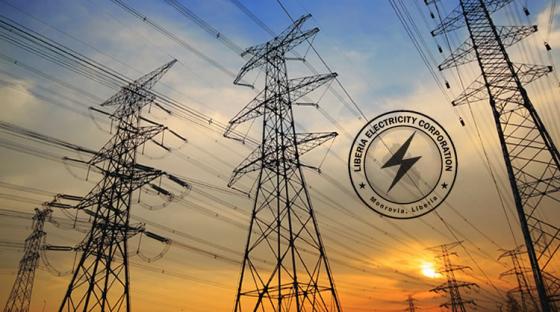Liberia: Why LEC Is Unable to Meet Peak Energy Demand?

The Liberia Electricity Corporation has warned that it is not in a position to meet the country's demand for energy during its peak hours.
The situation, according to the state power company, is down to the reduced operation of its thermal and hydropower plants, which is due to the high cost of fuel on the Liberian market.
The country's peak demand for electricity runs from 6 am to 9 am and 6 pm to 11 pm and, during this period, 74 MW of energy is needed for consumption.
However, LEC, which depends on the Mount Coffee Hydro Power Plant and the Transco-CLSG transmission lines from Ivory Coast, is struggling to generate 74 MW with unannounced power cuts becoming frequent.
“The LEC has on many occasions informed the public that the contracted capacity from CI Energies will not meet the LEC’s peak demand, which currently exceeds 70 MW,” the Corporation said.
“The LEC generates additional power through its thermal and hydropower plants. The additional power generated by LEC is approximately 47MW, which provides a combined capacity with CLSG of 74 MW.”
However, due to the exceedingly high cost of fuel, LEC has limited the use of its thermal plants to produce more cost-reflective energy. The resultant gap, which is minimum, is mitigated through load-shedding,” LEC added.
The LEC contract with CI Energies, the electricity supplier through the Transco-CLSG transmission lines, has a power generation capacity of 27 megawatts, which amounts to about 50% of what Mt. Coffee Hydro can generate.
The additional power was expected to address the frequent load-shedding during the country’s dry season as the water level at the dam becomes low.
However, CI Energies has disclosed that it is not in a position to supply Liberia with electricity beyond its contracted capacity.
It has, however, been alleged that the LEC has been exceeding the contracted megawatts—going an extra 23 megawatts — and at the same time not paying for the contracted electricity.
The allegation, according to Monie R. Captan is false, and at the Man Substation, there is a conductor that restricts Liberia to the megawatts agreement upon the power purchase agreement.
Captan, who is the Chief Executive Officer, said the CIE position is not related to payment; rather, its power generating capacity cannot exceed what has been agreed upon as Sierra Leone, and Guinea are benefiting from the same electricity.
The revelation from LEC that its thermal and hydropower plants are operating below capacity comes a few days after it announced a series of planned load-shedding to match electricity demand “to the available capacity.”
The load-shedding is expected to run between six and twelve hours a day, and will continue beyond its May 5 deadline if water inflow into the Mount Coffee does not improve “to enable the full operation of the dam.”
The latest power cut by LEC comes as Liberia remains one of the countries with one of the lowest electricity access rates in the world, with only about 12% of the population having access to electricity, constraining economic activities.
The issue of power cuts is, however, not strange, as scheduled blackouts have taken place across the country for a number of years now, for as long as 10 hours per day at a time.
The Mount Coffee dam is what the country depends on for nearly half of its energy needs. But since the dam became operational in 2016, the demand for electricity has outpaced its supply capacity.
This problem was supposed to be fixed by the arrival of the Transco transmission line from the Ivory Coast.
But a year later, after the switching on of the Transco and the signing of the power supply agreement with CI Energies and Ivory Coast, the issue of regular power supply still remains a problem, with unannounced power cuts becoming frequent.
Electricity theft, via illegal connections and non-payment by government agencies, has left the state power company in a precarious financial position.
The debt also makes it difficult for LEC to upgrade some of its outdated infrastructure and invest in maintenance. The Transco project involves the construction of five 225 kV substations and approximately 530km of 225 kV power lines running across five counties in Liberia.
